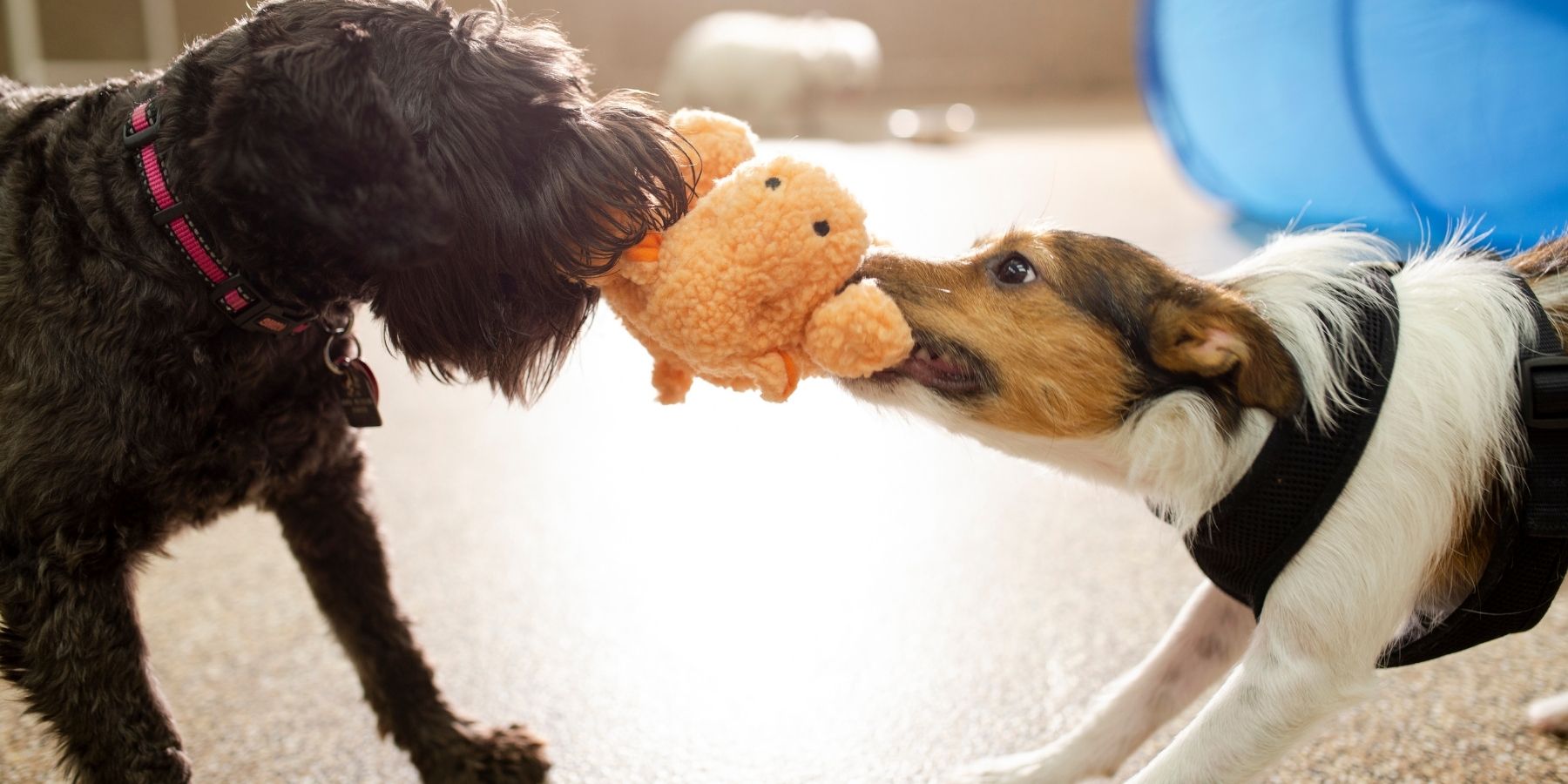Play fighting with your dog, often known as roughhousing, is a common activity for many dog owners. It involves mimicking the actions of a real fight in a playful manner, like gentle wrestling or tug of war.
This topic often brings up a crucial question: Is it okay to engage in this kind of play with your dog? Let’s delve into this topic to understand the dos and don’ts of play fighting with your furry friend.
Understanding Your Dog’s Personality
First and foremost, it’s essential to consider your dog’s personality and breed. Some dogs naturally enjoy rougher play, while others might not. For example, larger, more active breeds may be more inclined to enjoy play fighting compared to smaller or more timid breeds. It’s crucial to know your dog’s limits and preferences.
The Benefits of Play Fighting
Play fighting can have several benefits. It’s a great way to provide physical exercise and mental stimulation for your dog. This type of play can also strengthen the bond between you and your pet, as it’s a fun and interactive activity that you both can enjoy.
Setting Boundaries
While play fighting can be fun, setting boundaries is critical. It’s essential to teach your dog the difference between play and aggression. Establish clear commands like “stop” or “enough” to end the play. Consistency in these rules helps your dog understand when it’s playtime and when it’s time to be calm.
Avoiding Overstimulation
Dogs can sometimes get overexcited during play fighting, leading to unintentional roughness. It’s important to watch for signs of overstimulation, such as overly aggressive biting or growling. If your dog shows these signs, it’s time to calm down and take a break from playing.
Safe Play Fighting Techniques
When playing fighting with your dog, avoid using your hands or feet as toys. Instead, use appropriate play objects like tug ropes or soft toys. This helps prevent your dog from thinking that biting hands or feet is acceptable behavior.
The Role of Training
Training plays a vital role in safe play fighting. Your dog should have a good understanding of basic commands like “sit,” “stay,” and “leave it.” This training ensures that you can maintain control during playtime.
Understanding Play Signals
Dogs often use specific body language during play, such as a play bow (front end down, back end up), which signals that they are in a playful mood. Recognizing these signals can help you understand when your dog is playing and when they might be getting too rough or serious.
The Impact on Young Children
If you have young children, be cautious about play fighting around them. Dogs might not distinguish between adults and children during play, which could lead to accidental harm. Always supervise interactions between dogs and children.
Knowing When to Stop
If your dog becomes too rough or seems to be getting agitated rather than playful, it’s time to stop. It’s also important to end the game while it’s still fun, avoiding the point where either of you becomes frustrated or tired.
The Bottom Line
So, is it okay to play fight with your dog? The answer is yes but with caveats. It’s crucial to know your dog, set clear boundaries, and ensure the play remains safe and controlled. Remember, the goal of play fighting is to have fun and bond with your dog positively and safely.
In conclusion, play fighting can be a fun and beneficial activity for both you and your dog, as long as it’s done responsibly. Understanding your dog’s temperament, using appropriate play techniques, and maintaining control through training and boundaries will ensure that playtime remains a positive experience for both of you.f
